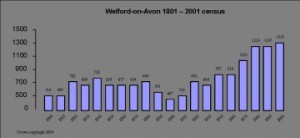Welford Village History
Mentioned in the Domesday Book, but with origins dating back much further, the development of Welford has taken place over many centuries. The oldest listings of well-known landmarks include the first Church built on the site of St Peter’s during the 12th century, the Southern portion of Binton Bridges (C13th), and the Maypole site (C14th). The 17th century saw the introduction of the many timber-framed cottages and the Wesleyan Chapel was constructed late in the 18th century.
The road system as we know it today was also largely in place by 1800. The original village school was built in Victorian times and housed the first Parish Council meeting in 1894. More recently the Memorial Hall building was erected in 1924 and the Allotments Trust was established in 1940. The Conservation Area containing 65 listed and 80 non-listed buildings was designated in 1969.
Formerly part of Gloucestershire, but now a Warwickshire village since 1931, Welford like most rural parishes, has its historical roots firmly based in agriculture and is still bordered by predominantly arable farmland, with commercial horticulture also very much in evidence. The population will have grown quite slowly until it reached 516 at the time of the first census in 1801. By 2001 it had grown by a further 250% to over 1,300 with the fastest growth rate occurring since the 1960’s. The village now has well over 800 residences, an electoral roll of 1450 and estimated population over 2000.
Today the Village is fortunate in having many excellent features in the form of facilities, clubs and societies and with a history of many successful community achievements. There are however, other facilities, services or activities that it either lacks or which residents would like to see changed or improved. Also, like most communities, it is experiencing continuous change, especially in recent years. Nowhere is this more evident than in traffic and population growth, employment and transport patterns, and with the challenges for some local people of the high cost of housing.
